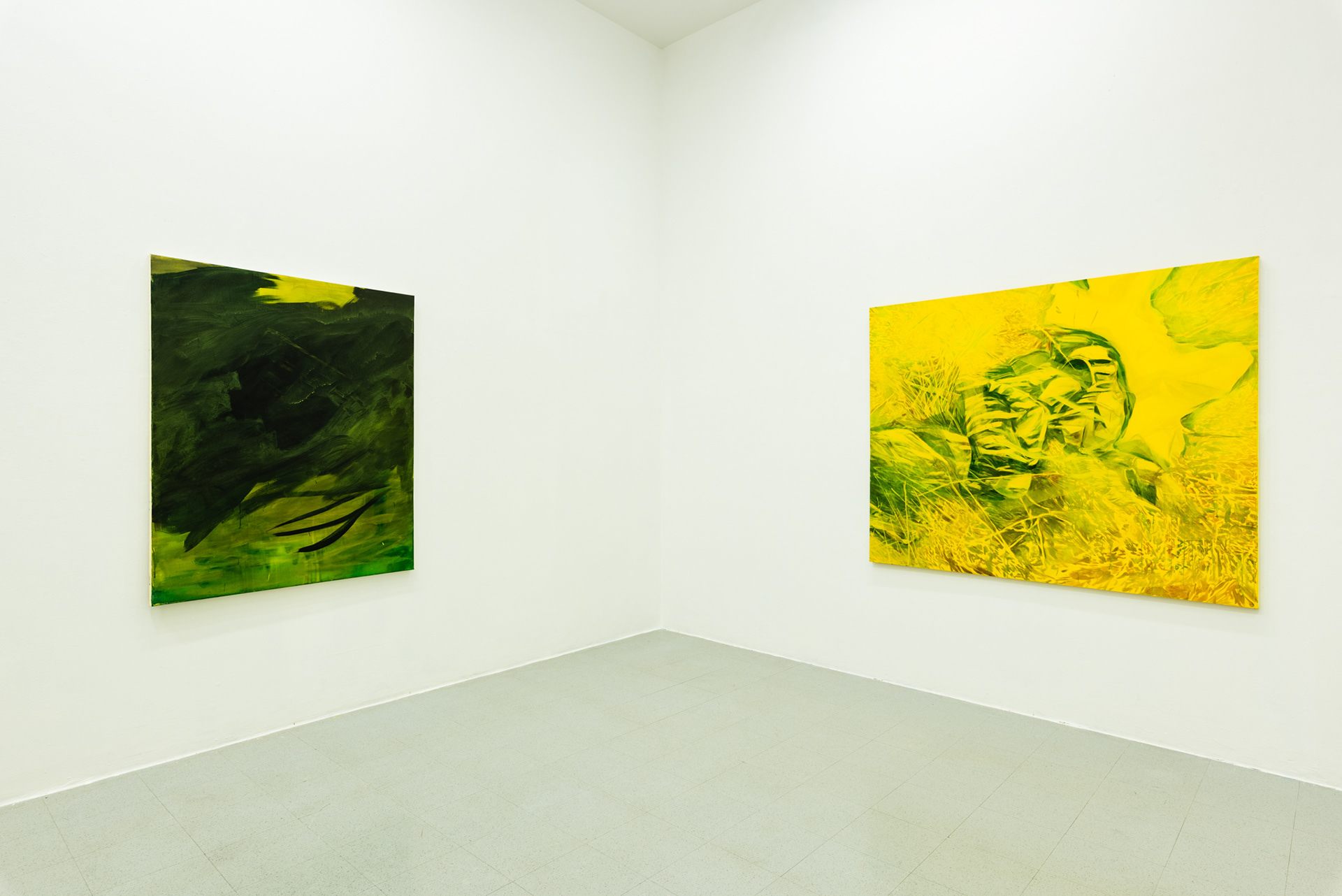
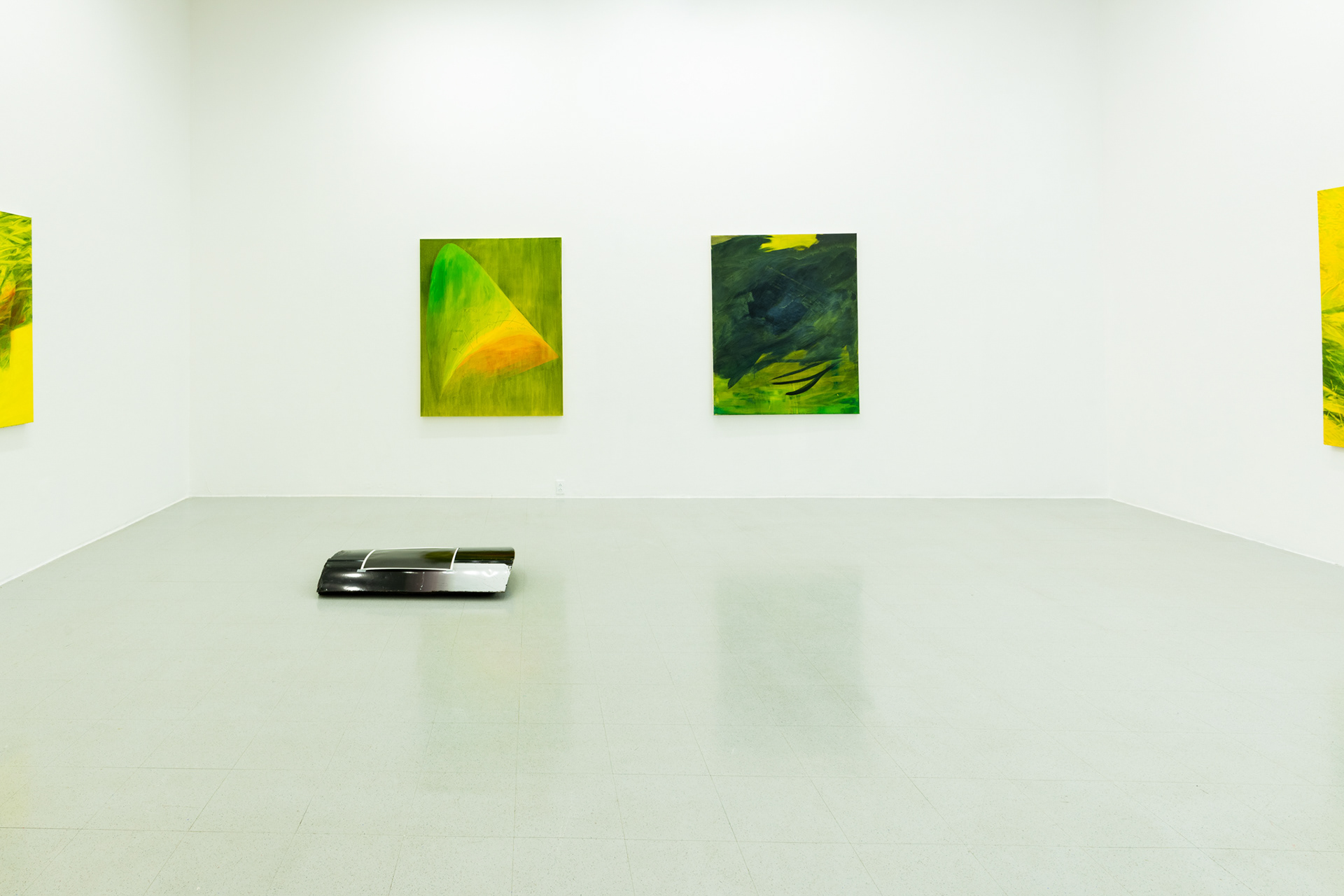
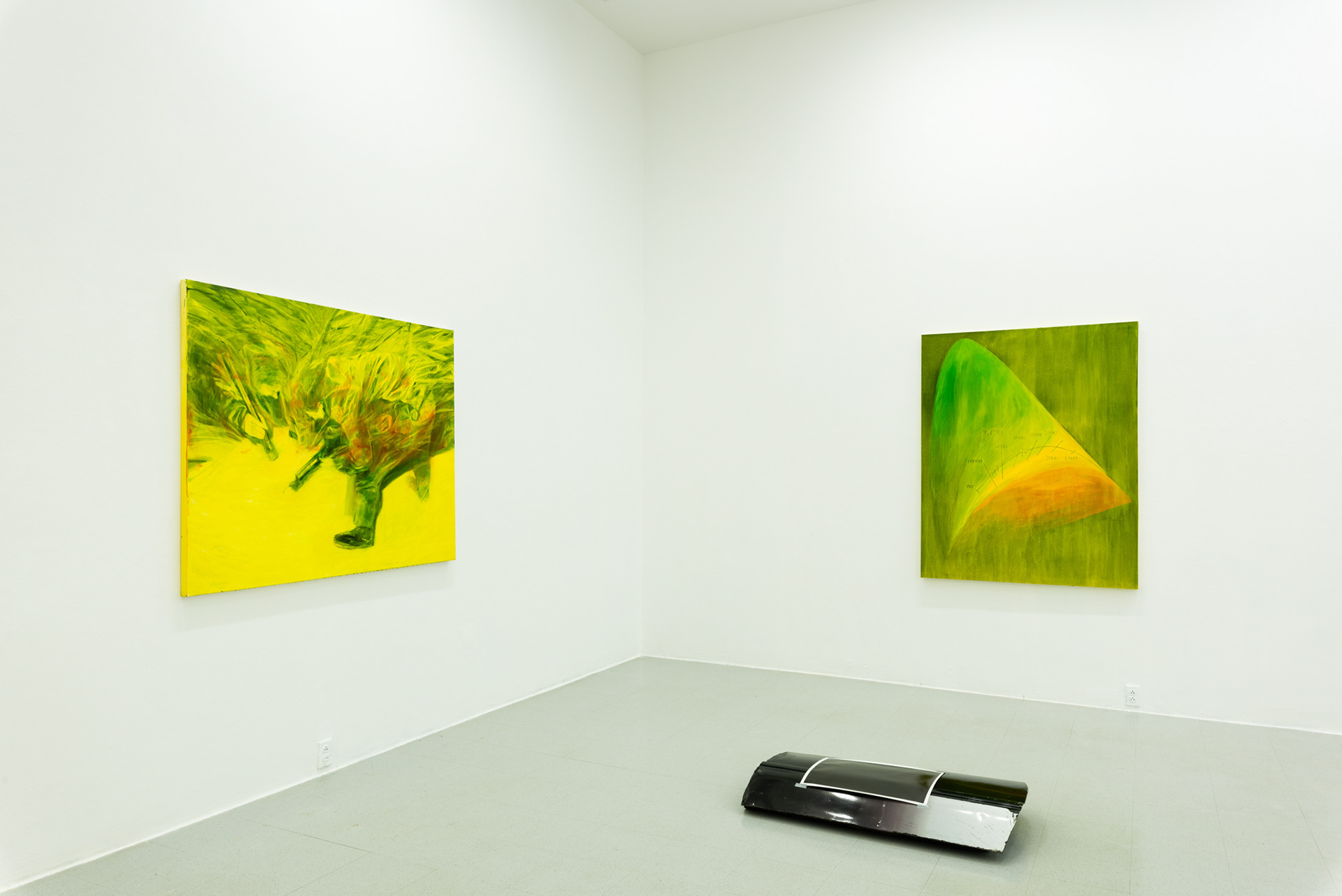
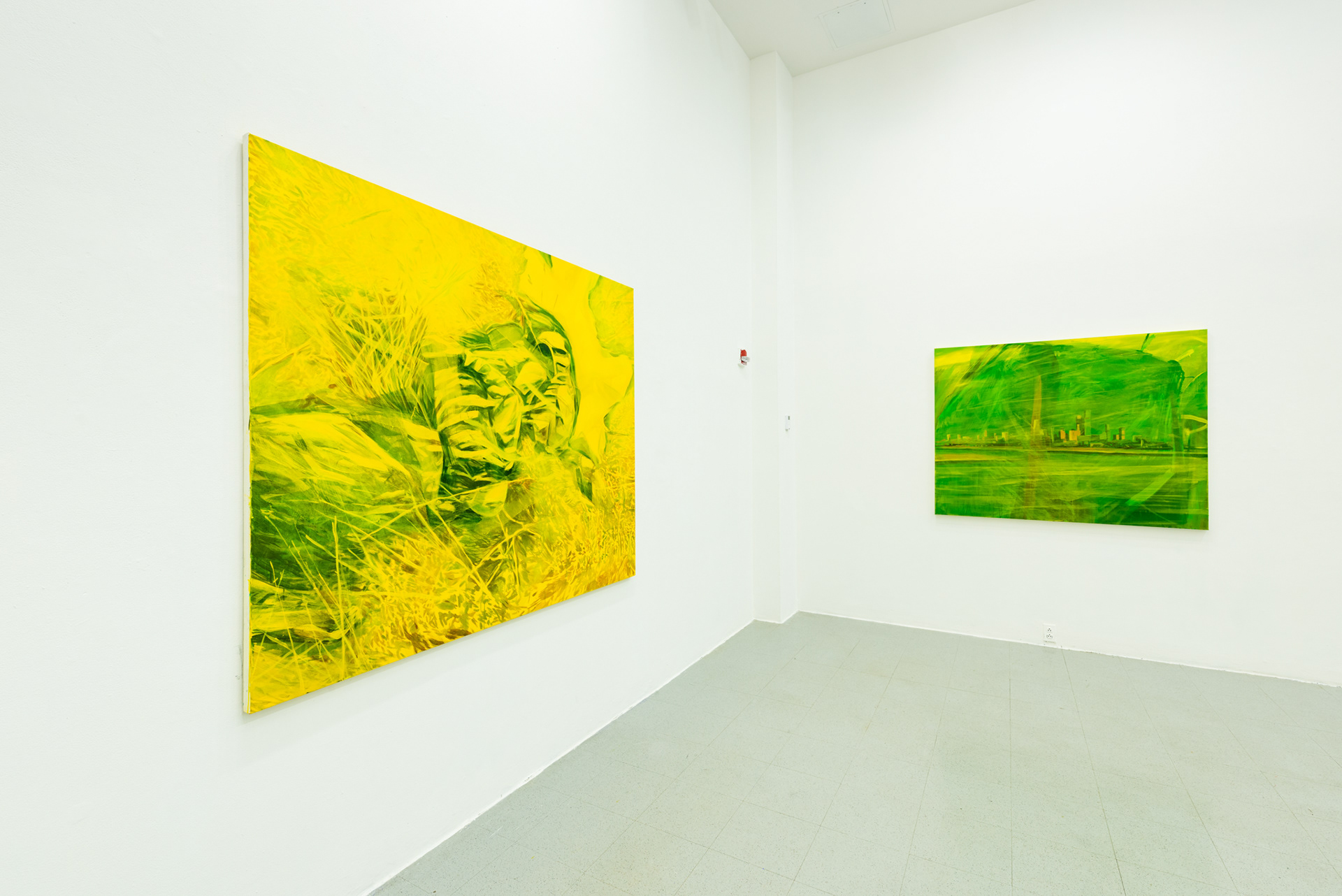
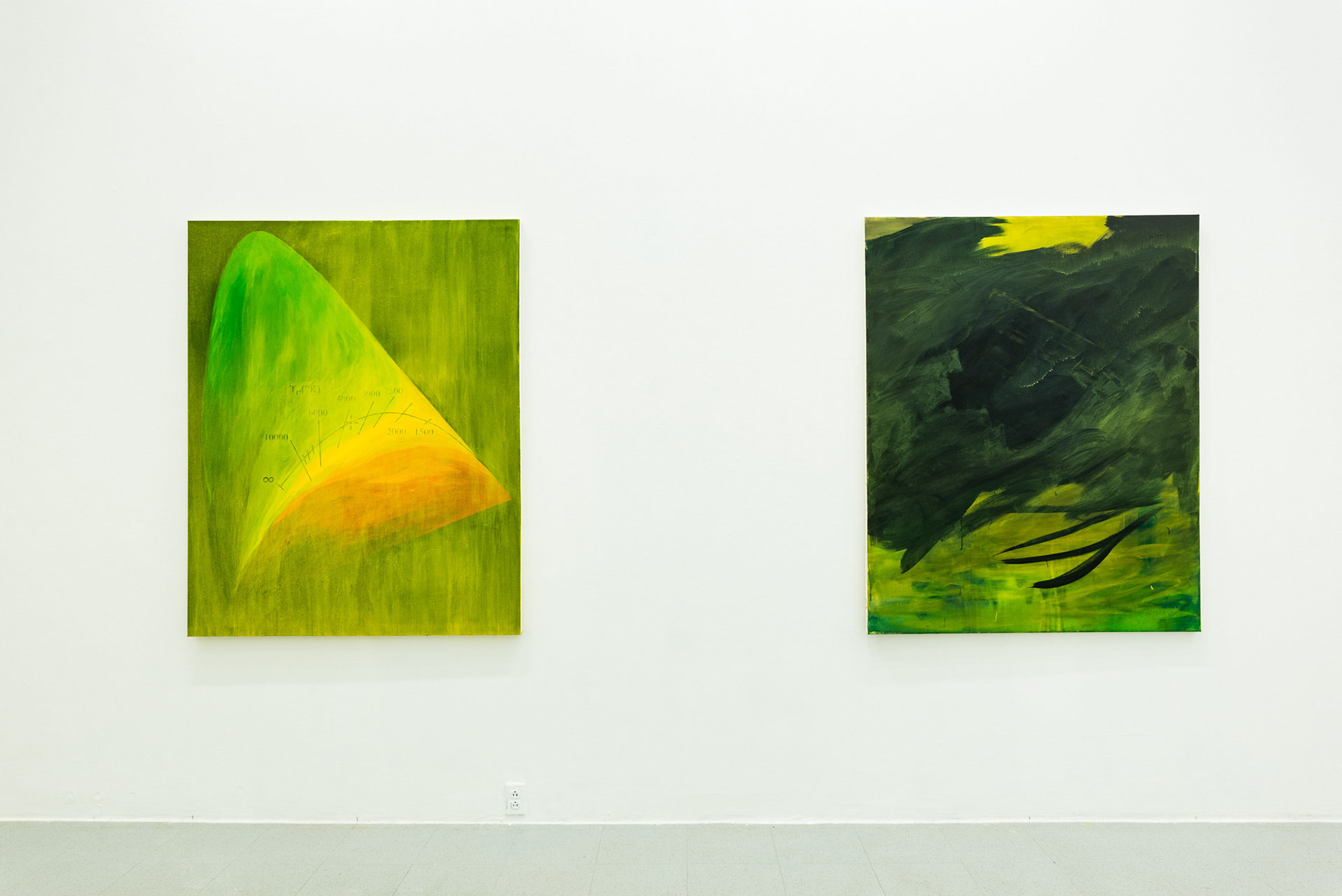
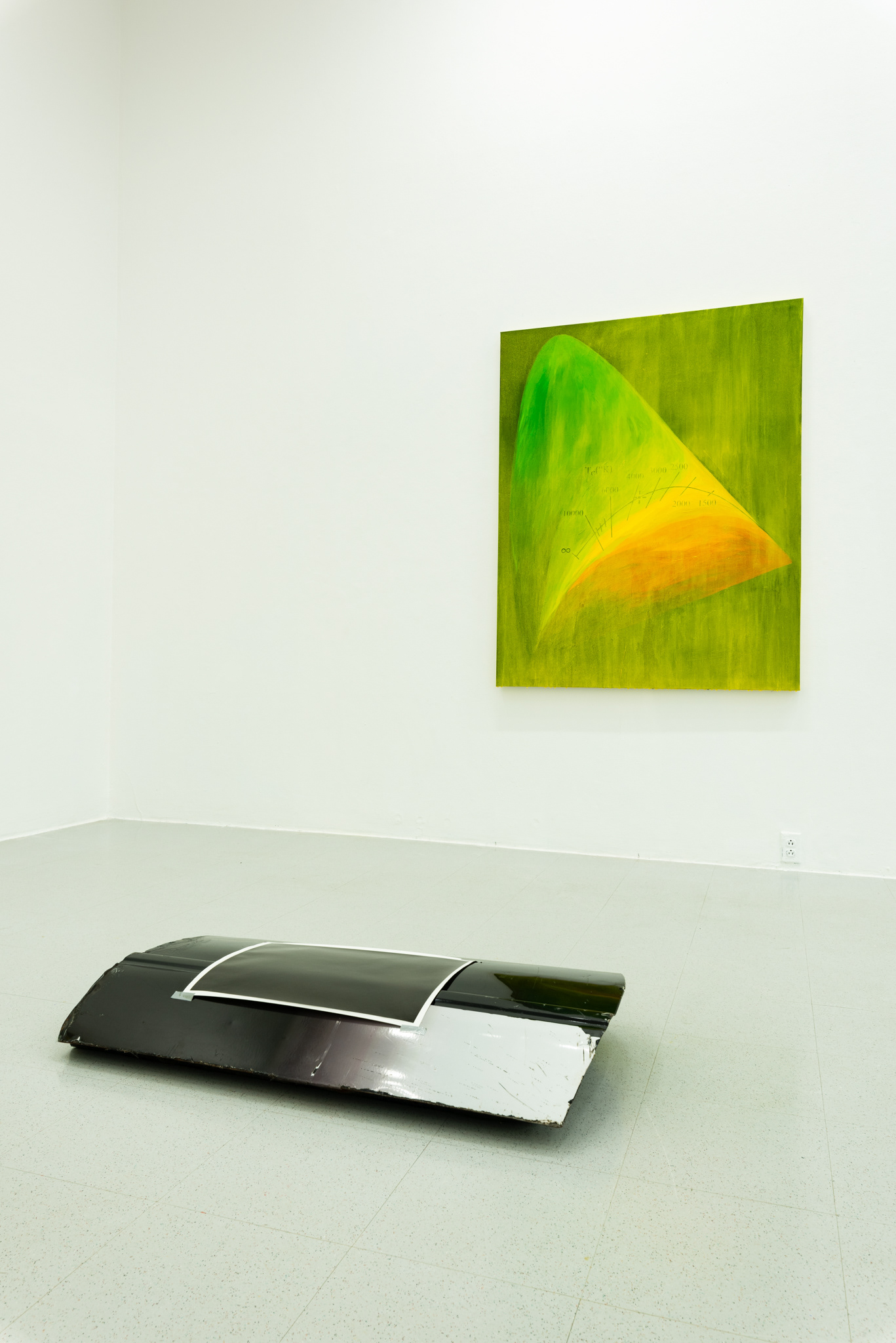
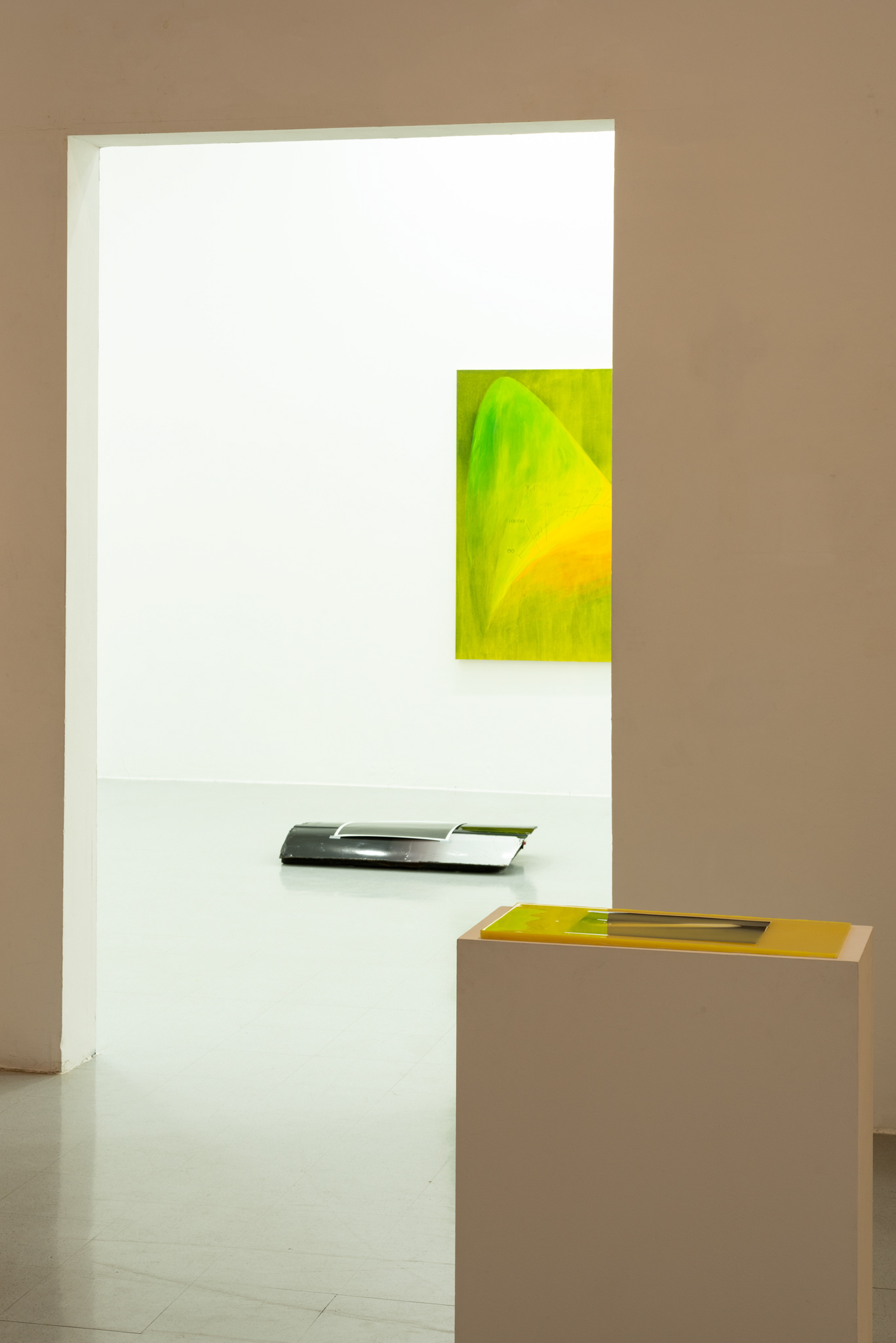
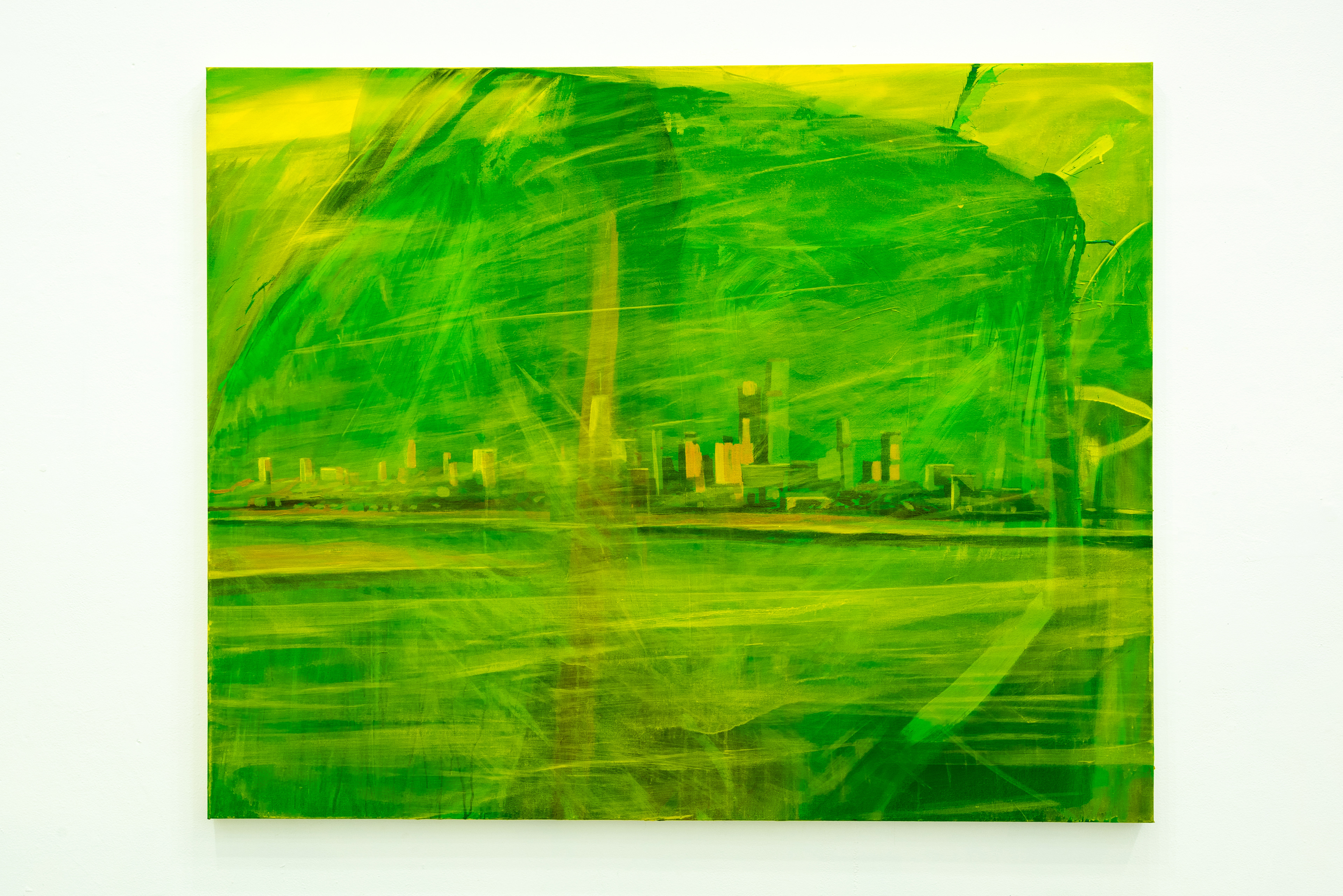
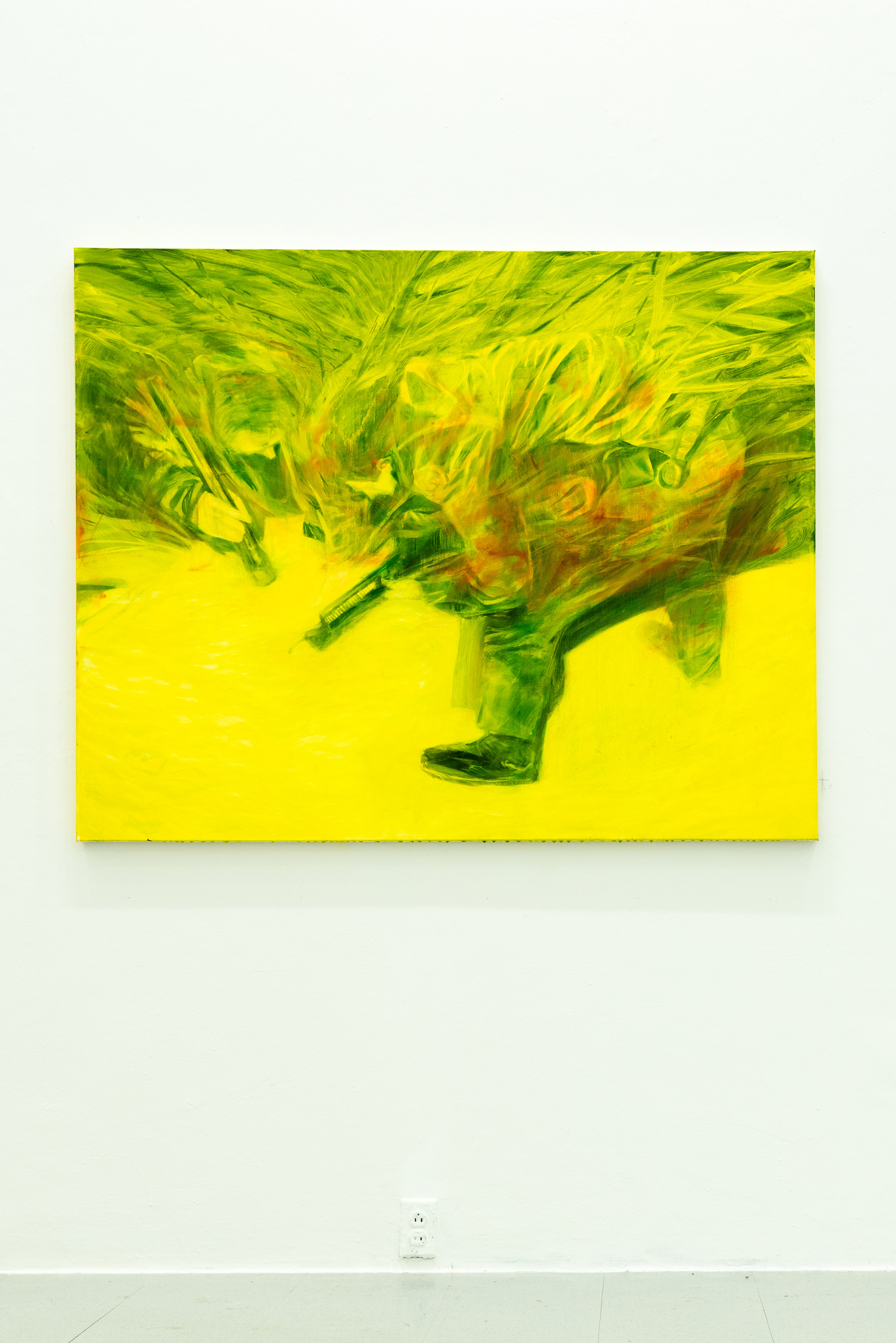
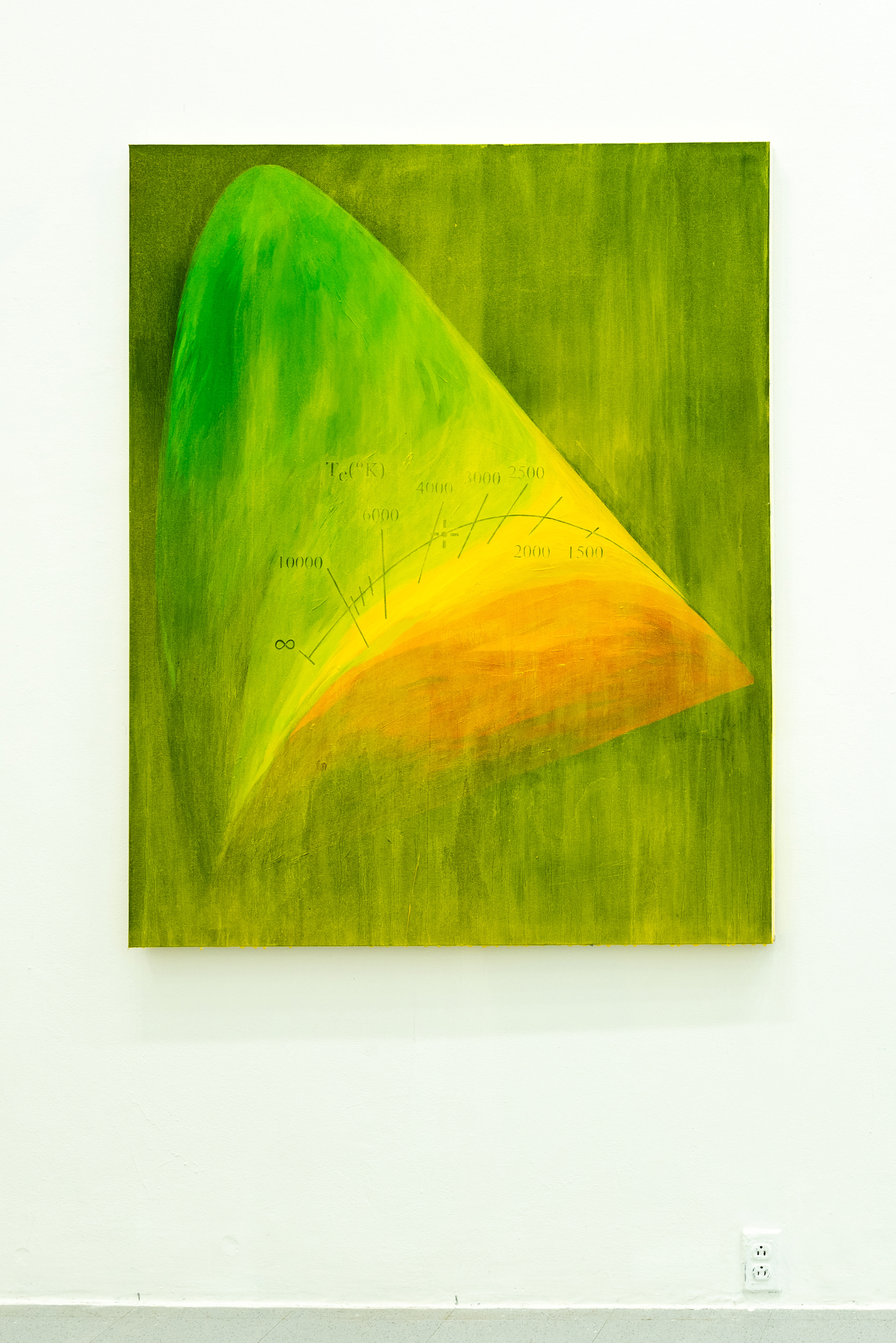
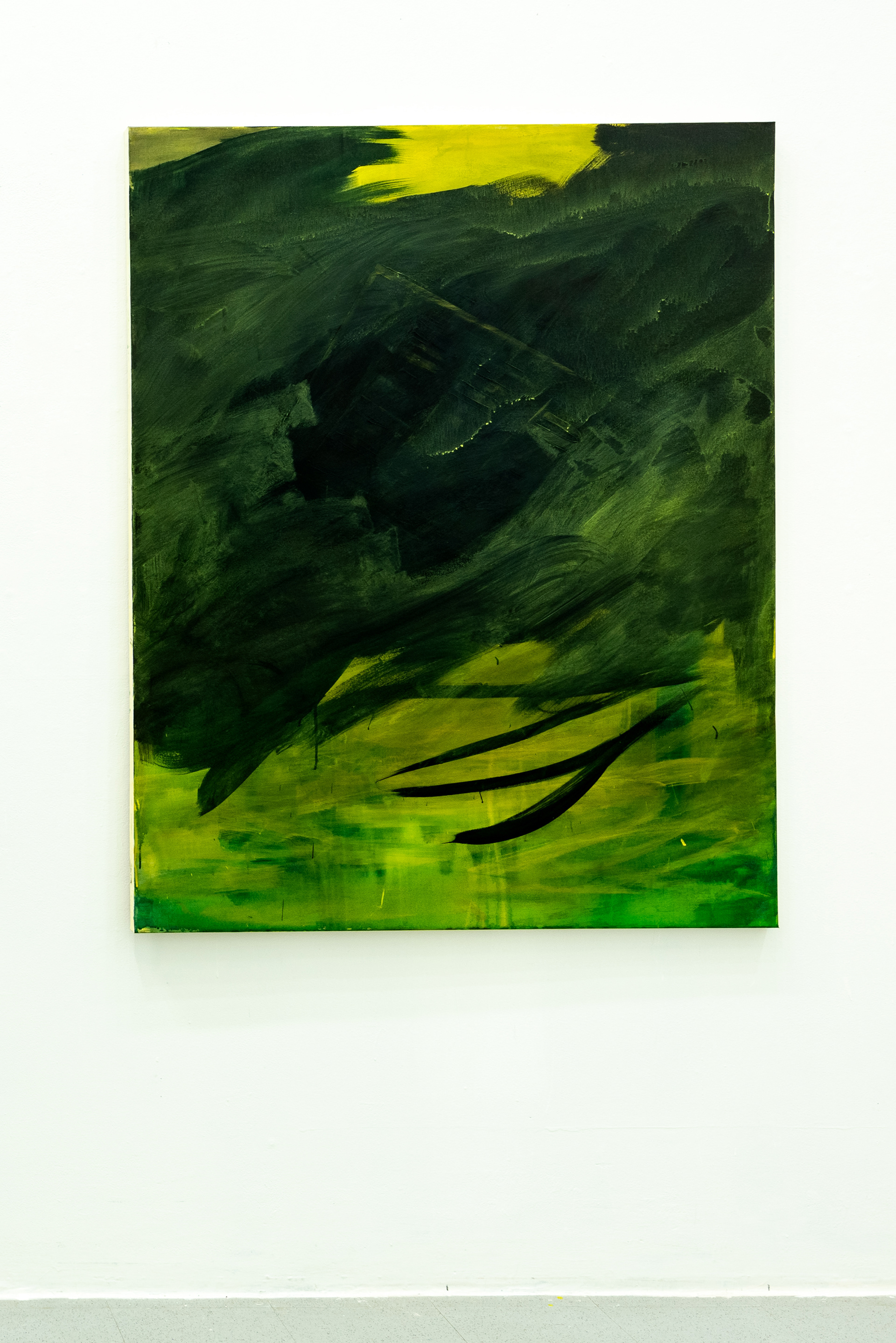
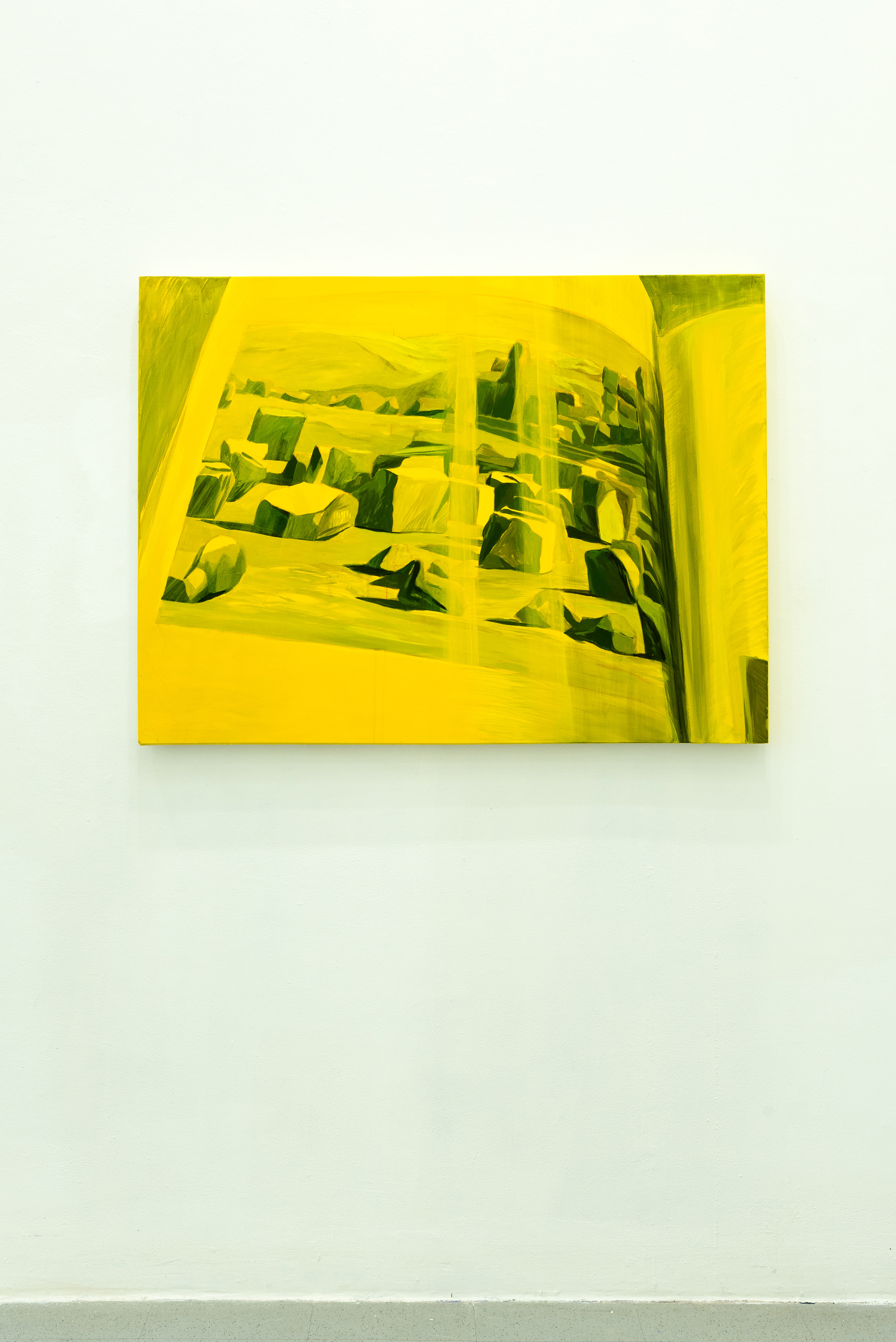
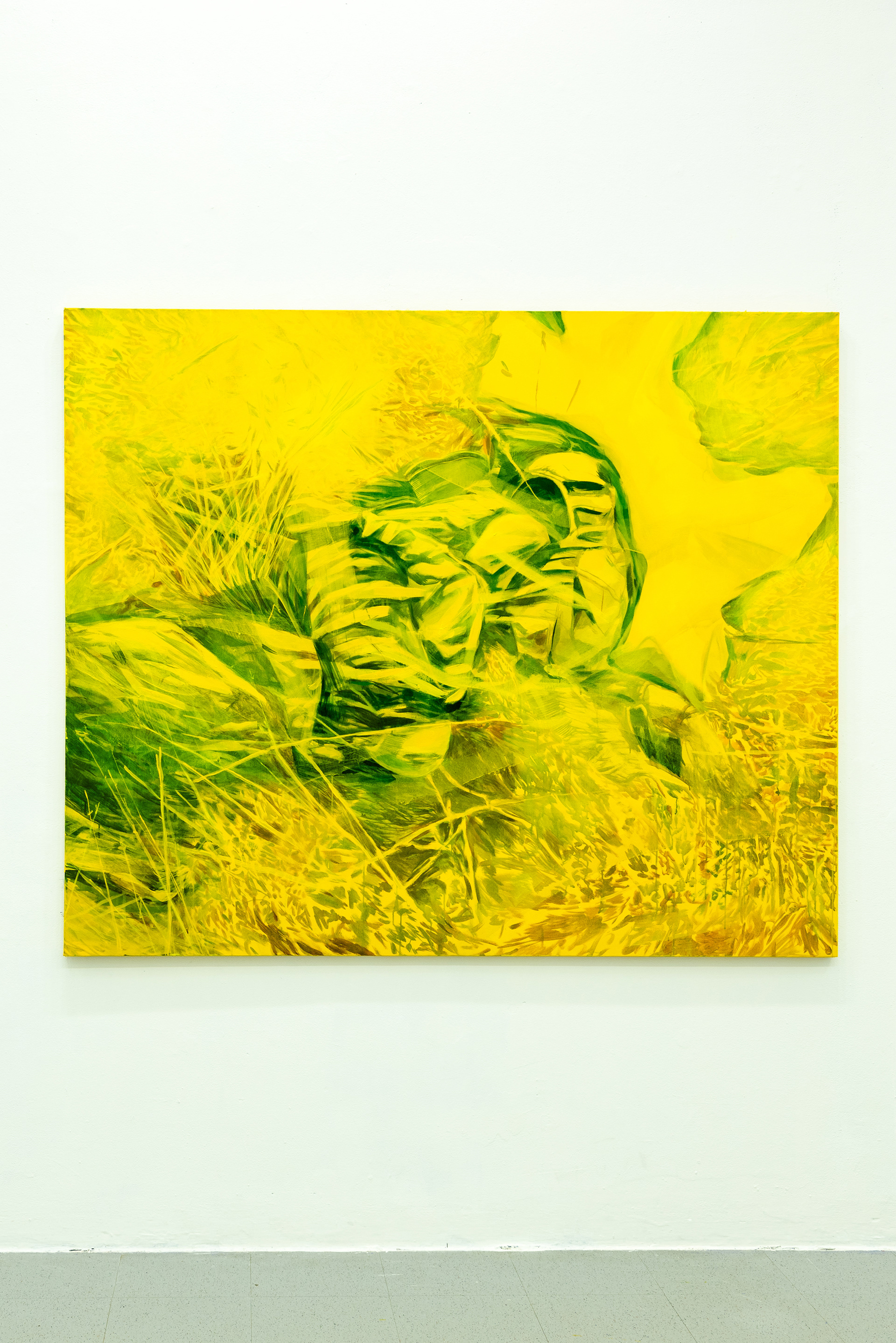
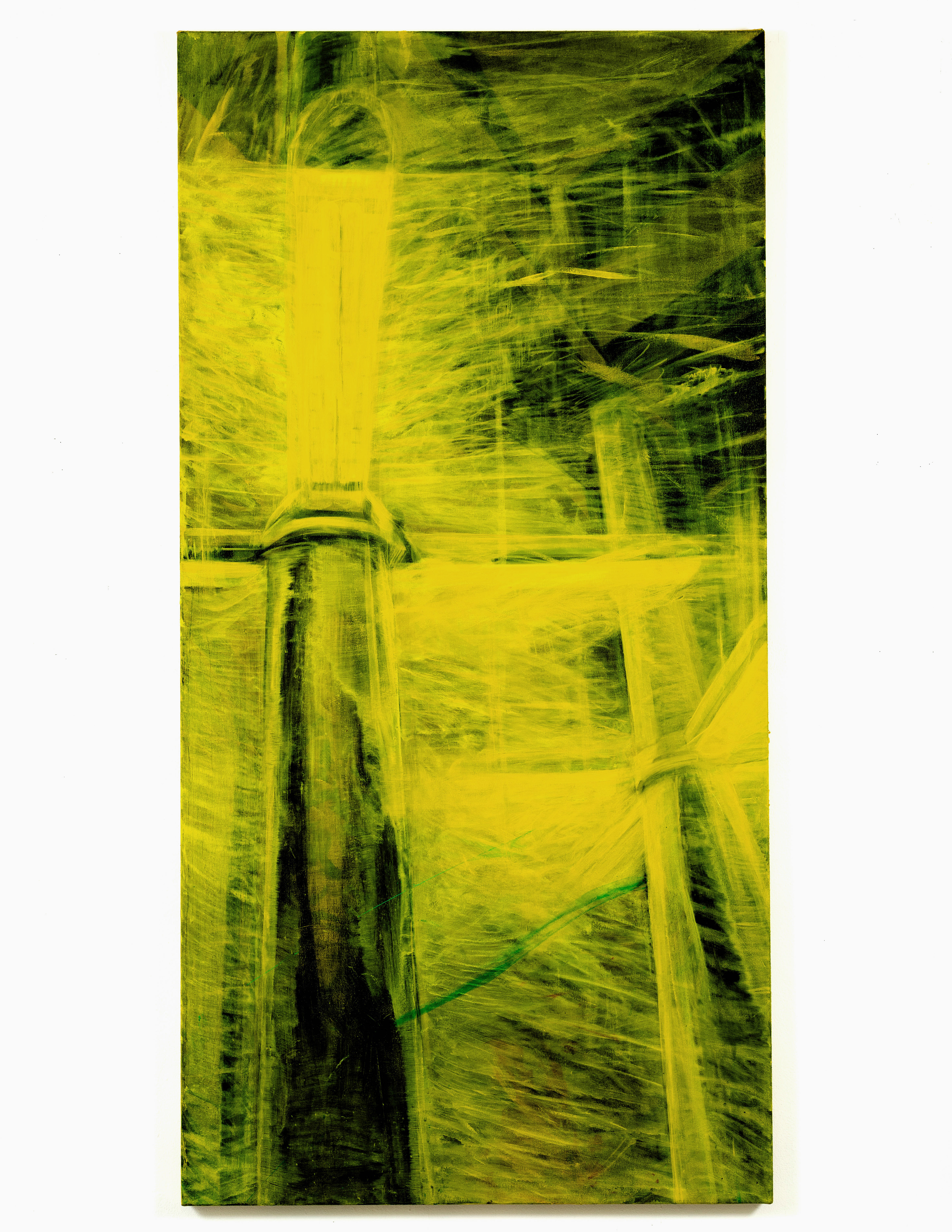
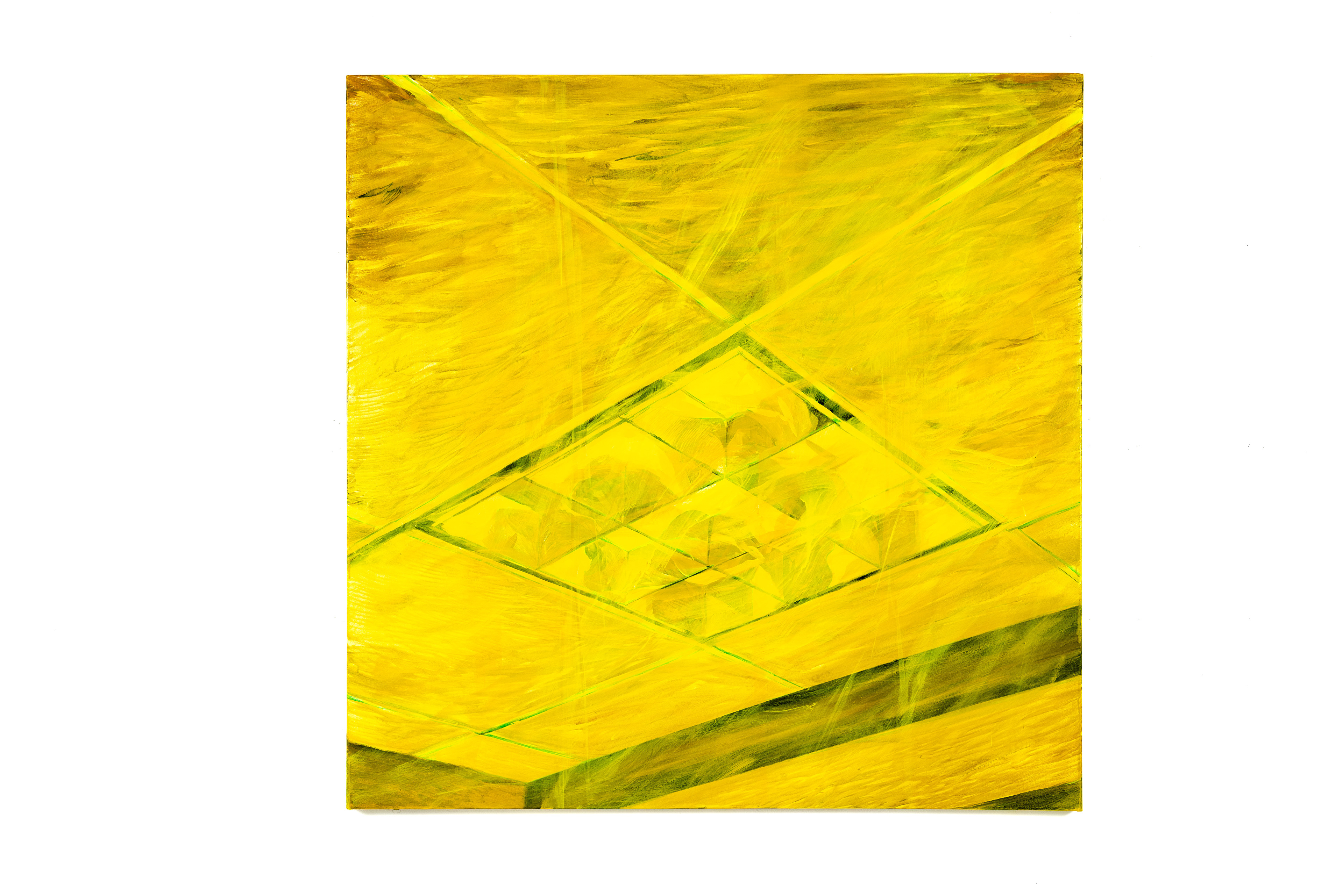
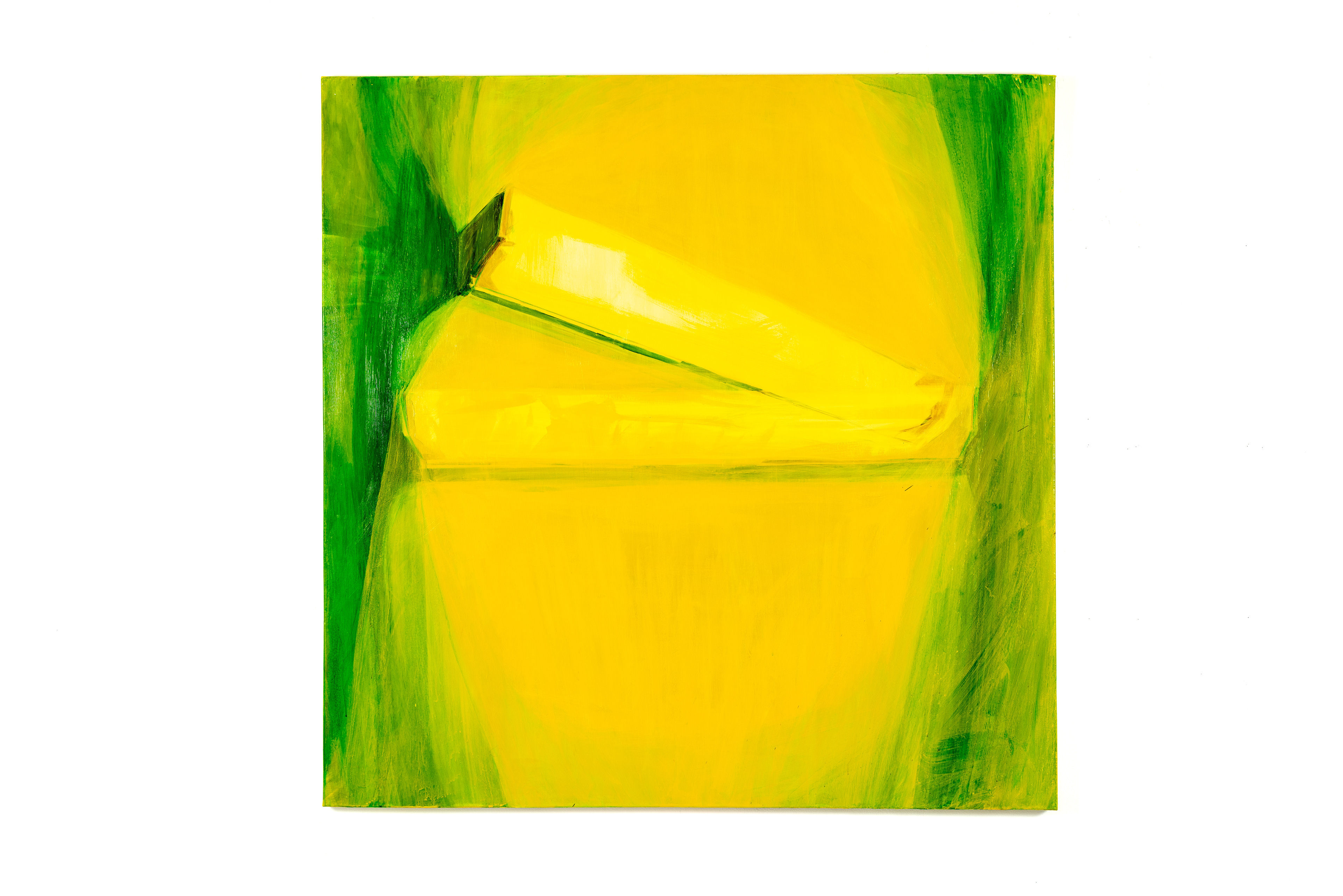
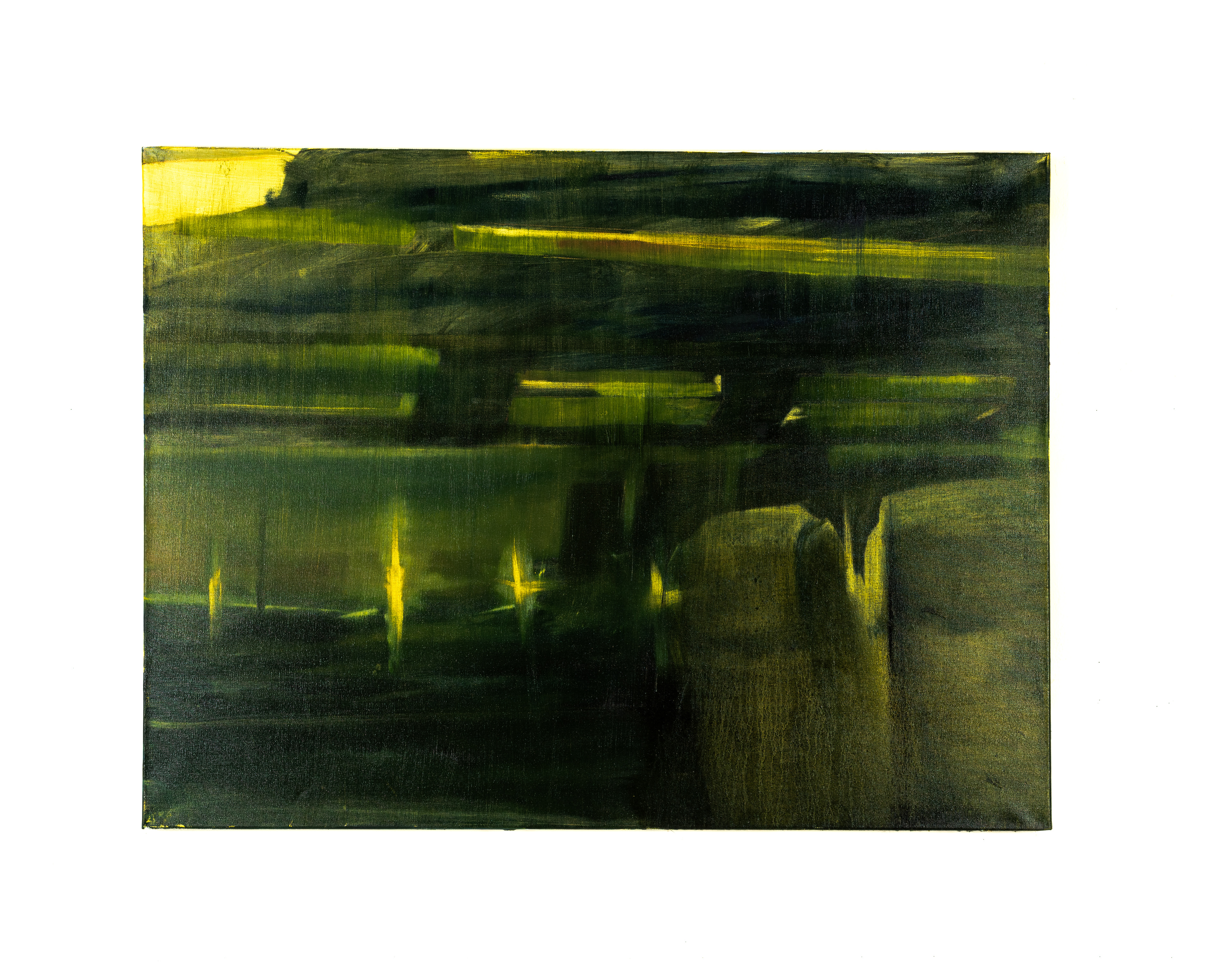
NJ transit#2, 30 x 40 inch (100 x 76 cm), canvas, oil, 2022
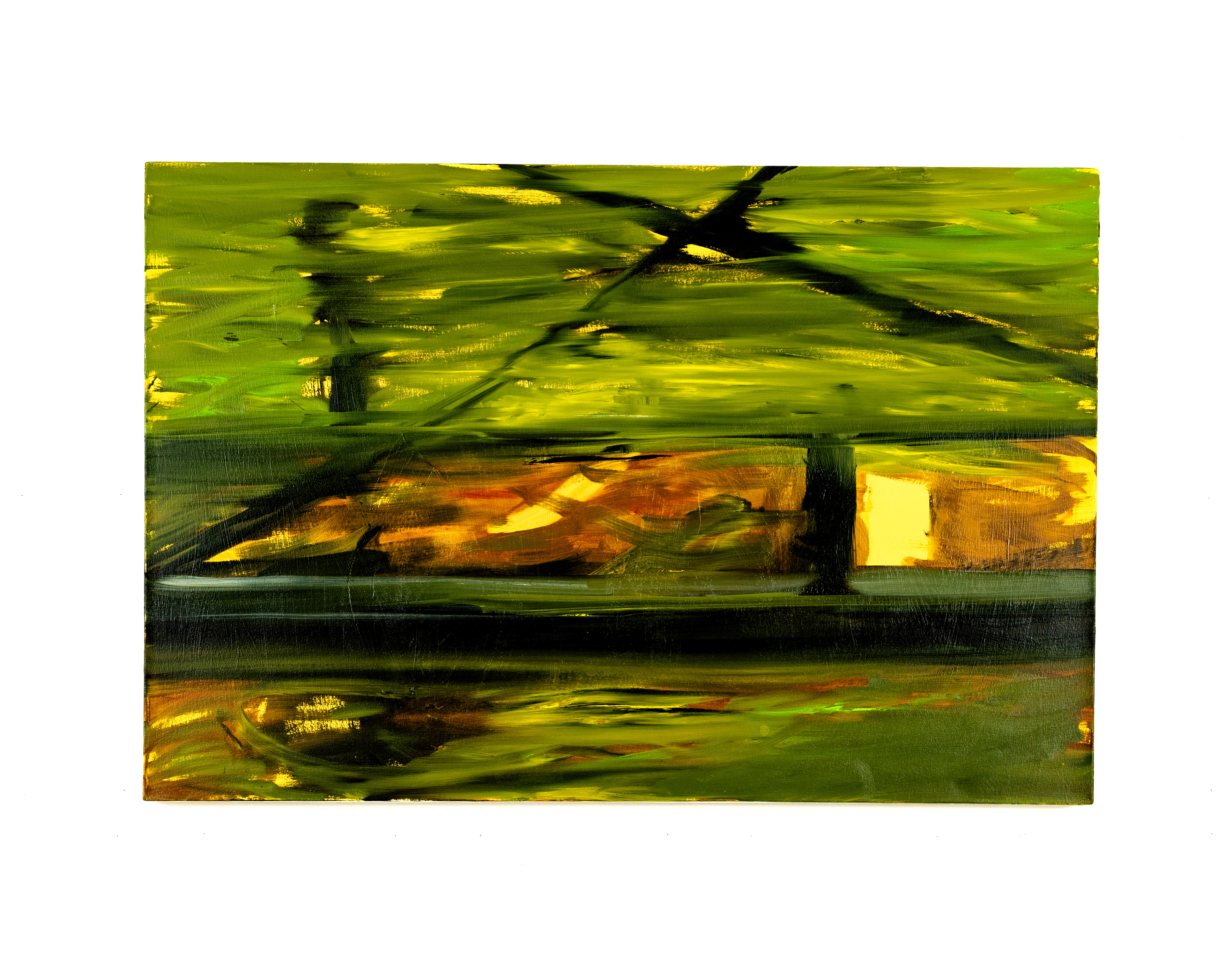
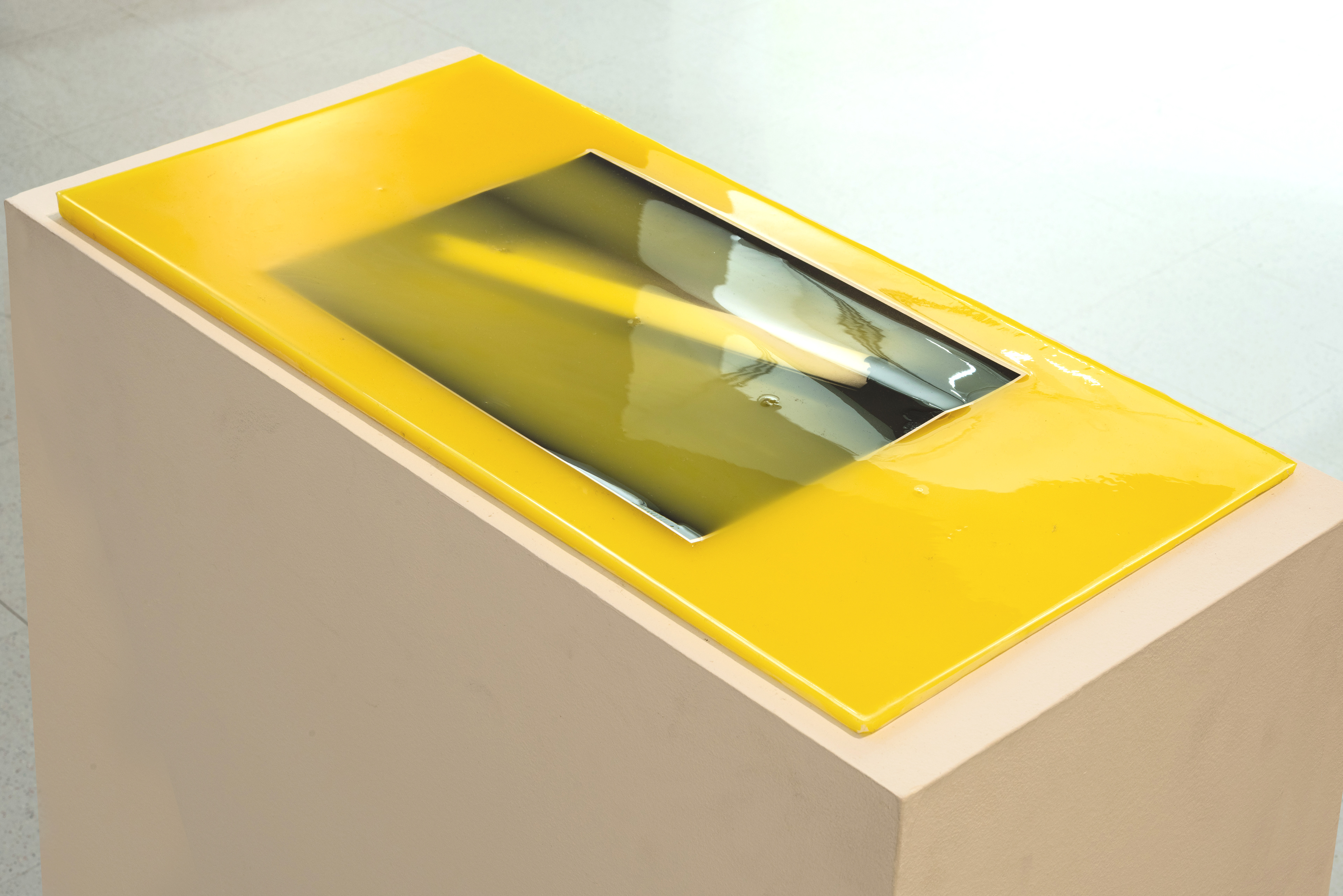
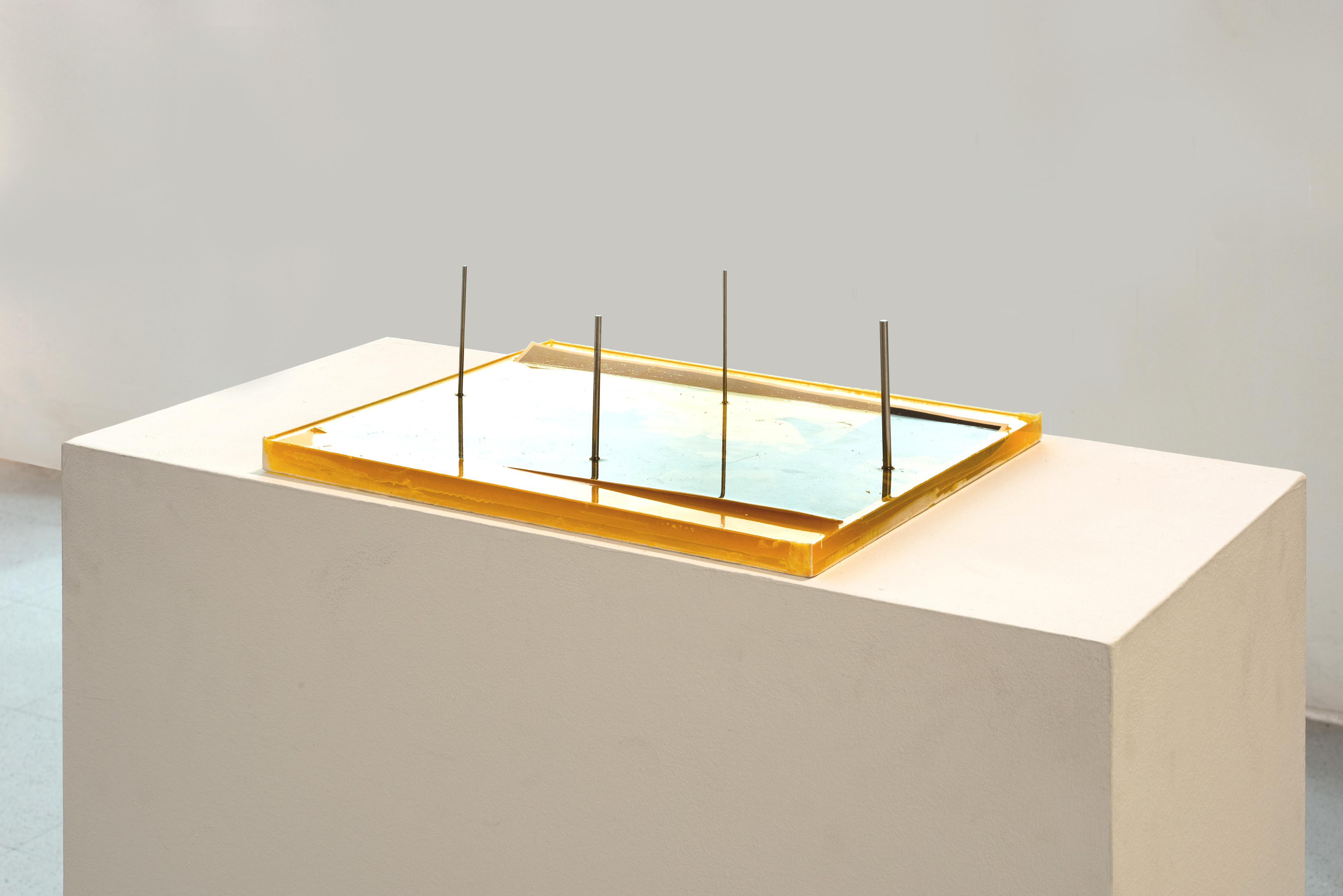
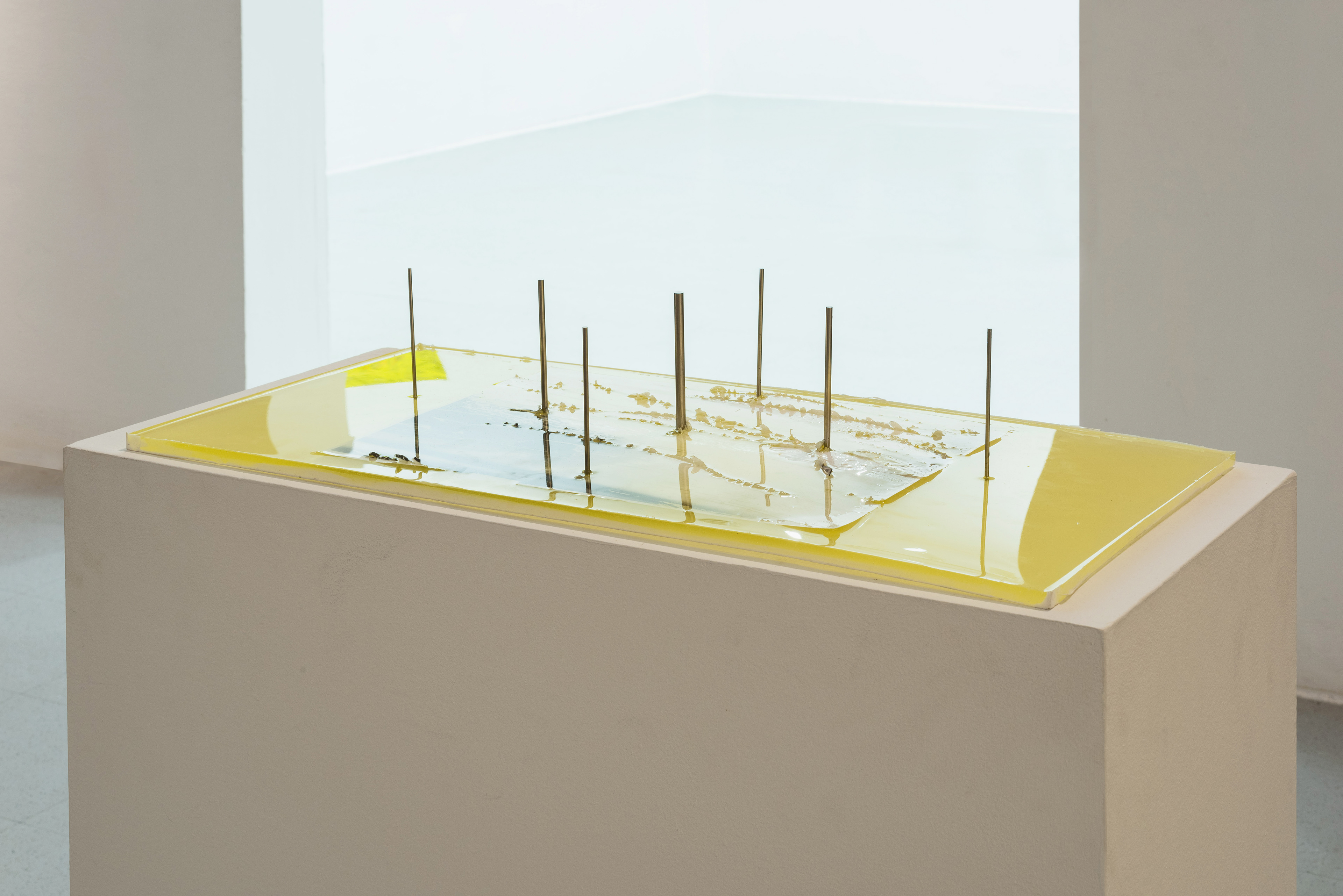
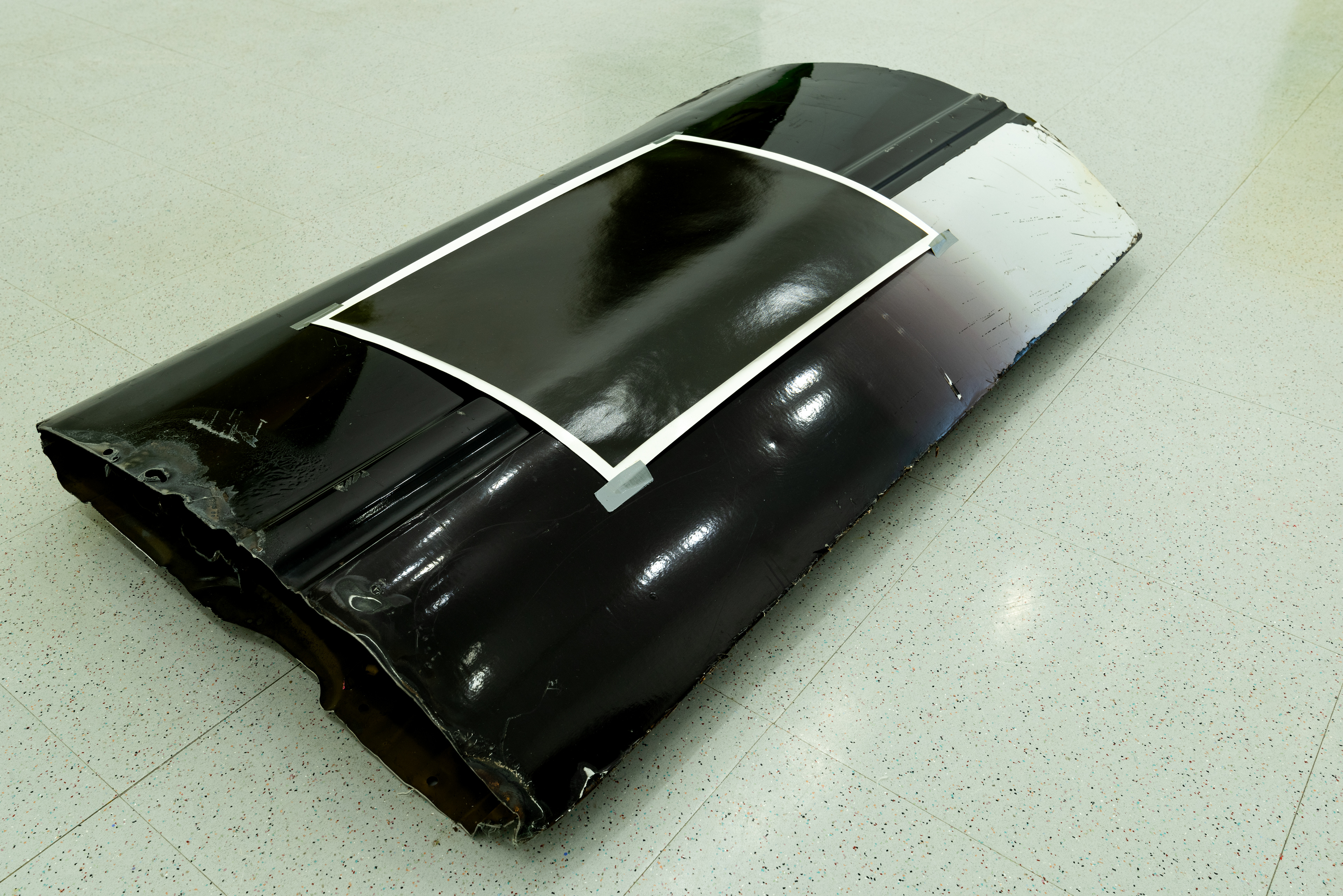
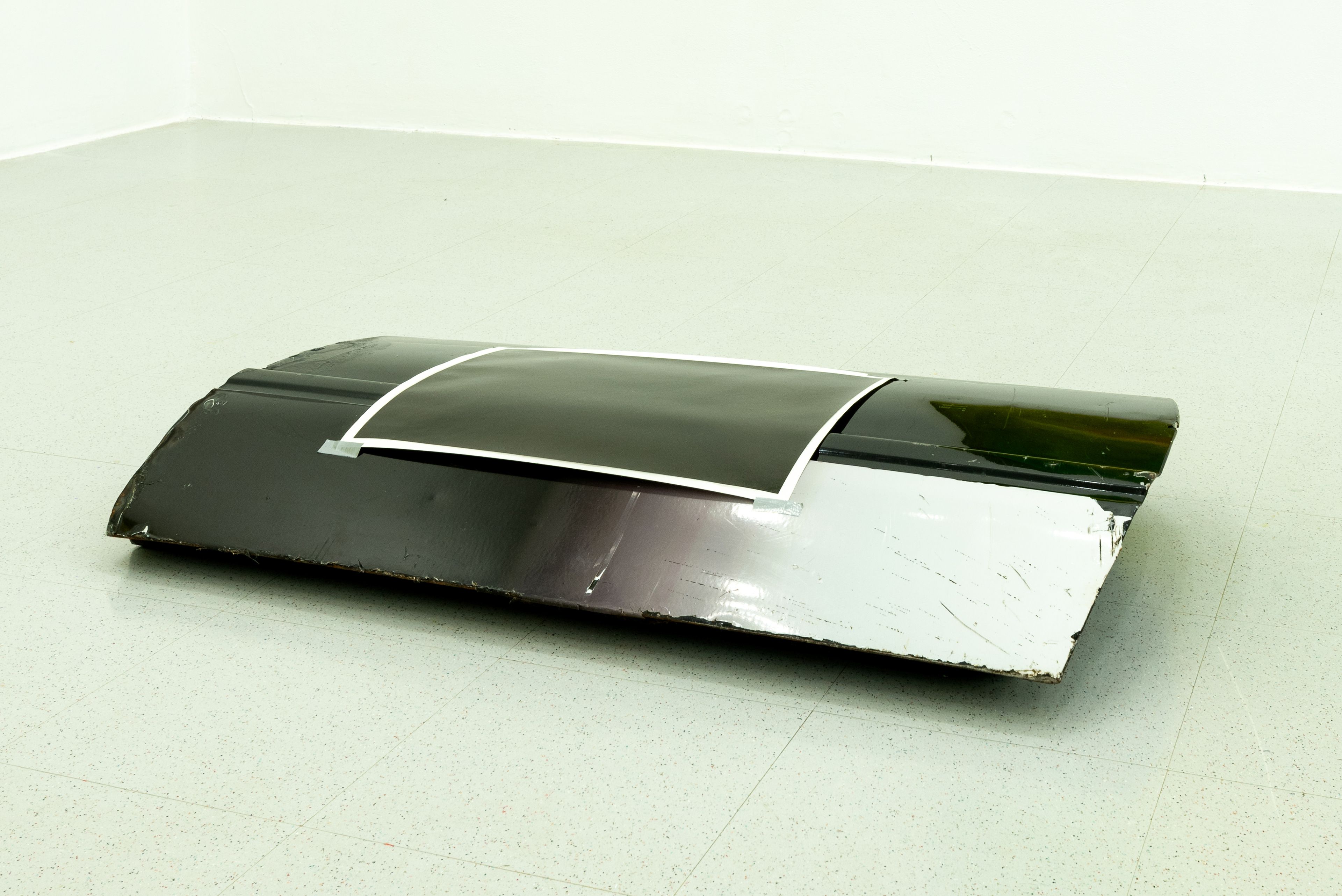
work titles (after exhibition photos, from left to right):
1. NJ Transit #3, 60 x 48 inch(152 x 122 cm), canvas, oil, acrylic, 2024
2. Flashlight #3, 60 x 48 inch(152 x 122 cm), canvas, oil, acrylic, 2024
3. Spectre #1 (art library light), 60 x 48 inch(152 x 122 cm), canvas, oil, acrylic, 2024
4. Hallway light, 60 x 48 inch(152 x 122 cm), canvas, oil, acrylic, 2024
5. Ruins, 35 x 45 inch(88 x 110 cm), canvas, acrylic, 2024
6. Telegram Image, 60 x 72 inch (152 x 182 cm), canvas, acrylic, 2024
7. Art Library Light, 72 x 36 inch (182 x 92 cm), canvas, oil, 2023
8. Ceiling light #2, 48 x 48 inch(122 x 122 cm), canvas, acrylic, 2024
9. Staircase light, 48 x 48 inch(122 x 122 cm), canvas, acrylic, 2024
10. NJ transit#2, 30 x 40 inch (100 x 76 cm), canvas, oil, 2023
11. NJ transit#4, 25 x 35 inch (80 x 60 cm), canvas, oil, 2024
12. CSB Light, 12 x 24 inch(30 x 60 cm), silver print, Ilford celluloid photo paper, 2024
13. Highland Par Room Light, 12 x 24 inch, silver print photo, epoxy resin, acrylic, 2024
14. Road Light, 12 x 24 inch, silver print photo, epoxy resin, acrylic, 2024
15. Car Door, metal reclaimed part of a car door, silver print, duct tape, Ilford photo paper,16 x 20 inch(40 x 50 cm), 2024
2. Flashlight #3, 60 x 48 inch(152 x 122 cm), canvas, oil, acrylic, 2024
3. Spectre #1 (art library light), 60 x 48 inch(152 x 122 cm), canvas, oil, acrylic, 2024
4. Hallway light, 60 x 48 inch(152 x 122 cm), canvas, oil, acrylic, 2024
5. Ruins, 35 x 45 inch(88 x 110 cm), canvas, acrylic, 2024
6. Telegram Image, 60 x 72 inch (152 x 182 cm), canvas, acrylic, 2024
7. Art Library Light, 72 x 36 inch (182 x 92 cm), canvas, oil, 2023
8. Ceiling light #2, 48 x 48 inch(122 x 122 cm), canvas, acrylic, 2024
9. Staircase light, 48 x 48 inch(122 x 122 cm), canvas, acrylic, 2024
10. NJ transit#2, 30 x 40 inch (100 x 76 cm), canvas, oil, 2023
11. NJ transit#4, 25 x 35 inch (80 x 60 cm), canvas, oil, 2024
12. CSB Light, 12 x 24 inch(30 x 60 cm), silver print, Ilford celluloid photo paper, 2024
13. Highland Par Room Light, 12 x 24 inch, silver print photo, epoxy resin, acrylic, 2024
14. Road Light, 12 x 24 inch, silver print photo, epoxy resin, acrylic, 2024
15. Car Door, metal reclaimed part of a car door, silver print, duct tape, Ilford photo paper,16 x 20 inch(40 x 50 cm), 2024
exhibition text:
War was the material I had access to from the very start of this series, the material I was trying to figure out how to work with, but predominantly failed. Dramas and tragedies that are accessible 24/7, mostly filmed from the first-person view or the drone: mutilated bodies of friends, useless evacuation of almost dead, useless running and hiding from the drone that will be yours, drone video stills with the person deciding to take his own life because of the fatal injury, or just exhaustion. Together with that, ruins of civilian buildings, houses, infrastructure, and piles of bodies were excavated from the rubble. A lot of foil blankets reflect morning light after the night rocket attack. After some time, justified anger becomes an addiction.
War was the material I had access to from the very start of this series, the material I was trying to figure out how to work with, but predominantly failed. Dramas and tragedies that are accessible 24/7, mostly filmed from the first-person view or the drone: mutilated bodies of friends, useless evacuation of almost dead, useless running and hiding from the drone that will be yours, drone video stills with the person deciding to take his own life because of the fatal injury, or just exhaustion. Together with that, ruins of civilian buildings, houses, infrastructure, and piles of bodies were excavated from the rubble. A lot of foil blankets reflect morning light after the night rocket attack. After some time, justified anger becomes an addiction.
If you enter the room, on the left side will be a painting of ruins.
In it you can see the opened book with a photo of the ruins on the left page. They are rendered enough, but they are generic ruins, ruins of something that probably collapsed many centuries ago. They are real ruins, but where they are from actually doesn’t matter; there is no description of their origin. They are not in any way directly connected with the subject of the Russian-Ukrainian war.
The next painting would be Flashlight#3. It’s a painting of an archival photo of the 90s from the ArtStore database. In the original photo, one can see two officers arresting the person while holding him on the ground and strobing two big police flashlights right into his face. In the painting itself, the viewer can’t see the person on the ground. No justified anger of the police brutality, just slowly submerging into the light of flashlights, embracing the moment of submission to light and power. The shiny painted leather form of the two figures can tell us it’s some special service, but we don’t know exactly what’s happening. Maybe they are some forensic med workers or archeologists working at night.
Between the Flashlight and Graph paintings, on the side of the room, a reclaimed car door part is placed, cut with the plasma cutter to get rid of the handle and window frame. On the floor, it looks like a black, scratched piece of metal with a gradient sticker on one side. It’s a passenger door. On top of the car door piece is taped celluloid photo paper(16x20 in.).It was developed with a fully open diaphragm in the darkroom. This sculpture has a photo predecessor, which I didn’t use in the show to avoid any direct instructions.
In it you can see the opened book with a photo of the ruins on the left page. They are rendered enough, but they are generic ruins, ruins of something that probably collapsed many centuries ago. They are real ruins, but where they are from actually doesn’t matter; there is no description of their origin. They are not in any way directly connected with the subject of the Russian-Ukrainian war.
The next painting would be Flashlight#3. It’s a painting of an archival photo of the 90s from the ArtStore database. In the original photo, one can see two officers arresting the person while holding him on the ground and strobing two big police flashlights right into his face. In the painting itself, the viewer can’t see the person on the ground. No justified anger of the police brutality, just slowly submerging into the light of flashlights, embracing the moment of submission to light and power. The shiny painted leather form of the two figures can tell us it’s some special service, but we don’t know exactly what’s happening. Maybe they are some forensic med workers or archeologists working at night.
Between the Flashlight and Graph paintings, on the side of the room, a reclaimed car door part is placed, cut with the plasma cutter to get rid of the handle and window frame. On the floor, it looks like a black, scratched piece of metal with a gradient sticker on one side. It’s a passenger door. On top of the car door piece is taped celluloid photo paper(16x20 in.).It was developed with a fully open diaphragm in the darkroom. This sculpture has a photo predecessor, which I didn’t use in the show to avoid any direct instructions.
The next painting has a vertical orientation. It’s a graph of the color temperature at the Art Library in New Brunswick. Particular light in a particular space at a particular time. Exactly in this place, under this light, was a photo of the opened book with the ruins made, which then became the reference for the painting. To be able to read the graph, the viewer first has to experience a thick, toxic-yellow film of oil paint. The fourth piece in the show is right next to it. It has the same vertical orientation. The most abstract painting in the show, with severe gestural marks. In the black field of the painting, the viewer can recognize some rectangular frame hanging almost in the air. The title of this one is Hallway Light, and it’s about the reflections of the CSB fourth-floor ceiling lights over my phone when I pass down the hallway to get into my studio.
The fifth painting is a Telegram image. One of the first images of the full-scale invasion that I saved on my phone with the intention of working with it later. The original photo is a drone shot of 3 dead soldier bodies lying under the bright March sun somewhere in the Ukrainian flatlands. Bodies are not mutilated, the form is russian. In the early stages of the war, many Russian soldiers were just freezing to death because of the bad logistics, which were not organized initially for maintaining a real combat war. Despite the cold season, the whole painting is covered with many thin layers of warm yellow, and the spots of snow are the brightest part of the whole painting. The dramatic content stays only in the background, and the whole image is stagnant and calm.
This painting opens the conversation for me about the pain of others I have access to and the right to express and aestheticize. Being aware of the senseless and nonheroic death of the political enemy, I am contemplating the tragedy of war, which also simultaneously becomes part of the early spring landscape, entering the realm of Gaia.
This painting opens the conversation for me about the pain of others I have access to and the right to express and aestheticize. Being aware of the senseless and nonheroic death of the political enemy, I am contemplating the tragedy of war, which also simultaneously becomes part of the early spring landscape, entering the realm of Gaia.
Outside the room, in the small group show, on the plinth, the viewer can encounter other pieces that belong to the CSB light series. B&W silver print photos portraying the different lights from my mundane life, literally submerged into a semitransparent cold-yellow body of epoxy. Quite basic mechanical gesture recreates again the tension between the desire to diffuse the archival record of light and to keep it, granting the indulgence to hower in the half-existing presence.